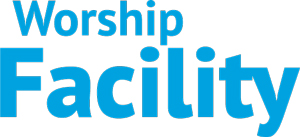During a finance meeting last week, I received a call from a church leader. They were discussing the adoption of a safety and security plan for their 130-member congregation. The only question they wanted me to answer was, “Are these plans nice to have or need to have?” My response was, “It depends on how you value your assets: people, property, and reputation. Consider the risk, consequences, and impact of any given scenario that could happen.” In today’s society, with increased homelessness, mental illness and substance abuse issues, radicalization, and diverse ideologies, churches remain the only venues that continue to welcome everyone with open doors, at the risk of its employees, volunteers and congregants. The question of whether church safety and security plans are merely a luxury, or a necessity is more relevant than ever. While places of worship have traditionally been sanctuaries of peace, recent events highlight the critical need for proactive measures to protect congregations. Adopting a risk management mindset toward member safety is not just prudent—it’s essential.
The Evolving Landscape of Church Safety
Churches, by nature, are open and welcoming environments, which unfortunately can also make them vulnerable targets. Incidents of violence, natural disasters, and emergencies, while rare, can have devastating consequences when they do occur. These realities compel us to reconsider the notion that safety and security plans are optional. Instead, they should be viewed as a foundational aspect of church administration.
Proactive Risk Management
Risk management involves identifying potential threats and implementing strategies to mitigate them. For churches, this means conducting thorough risk assessments to understand vulnerabilities and developing comprehensive safety plans. These plans should address a range of scenarios from active shooter situations to fire emergencies and natural disasters.
Key Components of a Church Safety Plan
- Emergency Response Procedures: Clear guidelines for evacuations, lockdowns, and medical emergencies can save lives. Regular drills ensure that staff and members know how to respond swiftly and effectively.
- Safety/Security Personnel: Trained safety/security teams, whether volunteers or hired professionals, can provide a visible deterrent to potential threats and offer a rapid response if needed.
- Surveillance Systems: Modern technology, such as CCTV cameras and alarm systems, can enhance situational awareness and provide critical evidence in the event of an incident.
- Access Control: Limiting access to certain areas of the church can prevent unauthorized entry and protect vulnerable spaces like nurseries and offices.
- Communication Strategies: Effective communication plans, including emergency contact lists and notification systems, ensure that information is disseminated quickly to all members during a crisis.
The Ethical Responsibility
Church leaders have an ethical responsibility to safeguard their congregations. By adopting a risk management mindset, they demonstrate a commitment to the well-being of their members. This proactive approach not only reduces the likelihood of incidents but also reassures the congregation that their safety is a priority
Why Insurance Companies Advocate for Vetted Plans
Insurance companies like Church & Casualty, ChurchInsure, GuideOne, Guidestone, Church Mutual, Brotherhood, Anchor Insurance, Philadelphia and more recognize the importance of having a well-vetted safety and security plan for their clients. Such plans demonstrate that a church has taken the necessary steps to mitigate risks, which can reduce the likelihood of incidents that lead to claims. In turn, this can result in lower insurance premiums and more favorable coverage terms. Insurers want to see that churches are proactive in protecting their members and property, as it reflects a lower risk profile and a commitment to safety.
The Challenge for Laypeople
Creating a comprehensive safety plan can be an arduous and complex task, especially for those without experience in risk management. The process requires a deep understanding of potential threats, appropriate responses, and the development of detailed procedures and training programs. For laypeople, this can be overwhelming and time-consuming, often resulting in incomplete or ineffective plans.
In conclusion, church safety and security plans are far from a luxury—they are a vital necessity. The time to act is now. Church leaders must embrace risk management to create a secure environment where faith can flourish without fear. By doing so, they fulfill their duty of care and build a stronger, more resilient community.
It’s not just about having a plan; it’s about ensuring that plan is comprehensive, regularly updated, and effectively communicated to all involved. Investing in safety today can make all the difference tomorrow.
This article was written by Jeff Kearnan of the Kearnan Consulting Group. Jeffrey C. Kearnan specializes in security consulting, emergency management, and law enforcement training, with significant expertise in supporting houses of worship. As the founder of Church Security Solutions, he assists churches in threat assessments, grant applications, and developing emergency response plans. He also provides expert witness consultation and instructs law enforcement professionals in tactical operations and active shooter response. With decades of experience in law enforcement and private security, Kearnan has an extensive background in creating and implementing safety programs tailored to faith-based organizations, focusing on safeguarding congregations while addressing their unique operational and security challenges.

